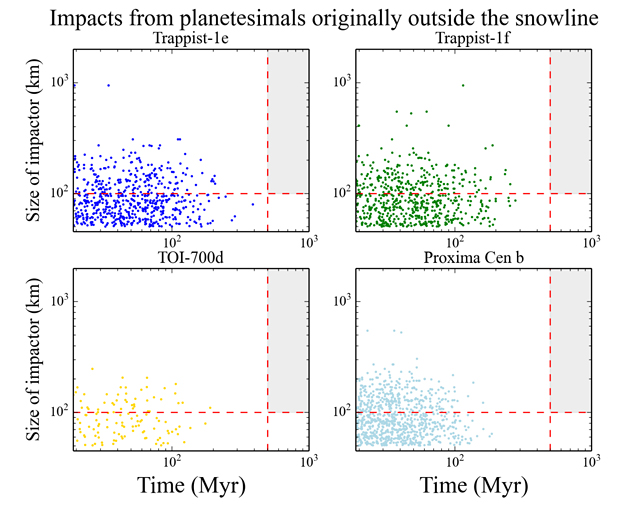Habitable Planet Formation Around Low-mass Stars

In recent years a paradigm shift has occurred in exoplanet science, wherein low-mass stars are increasingly viewed as a foundational pillar of the search for potentially habitable worlds in the solar neighborhood.
However, the formation processes of this rapidly accumulating sample of planet systems are still poorly understood. Moreover, it is unclear whether tenuous primordial atmospheres around these Earth-analogs could have survived the intense epoch of heightened stellar activity that is typical for low-mass stars.
We present new simulations of in-situ planet formation across the M-dwarf mass spectrum, and derive leftover debris populations of small bodies that might source delayed volatile delivery. We then follow the evolution of this debris with high-resolution models of real systems of habitable zone planets around low-mass stars such as TRAPPIST-1, Proxima Centauri and TOI-700.
While debris in the radial vicinity of the habitable zone planets is removed rapidly, thus making delayed volatile delivery highly unlikely, we find that material ubiquitously scattered into an exo-asteroid belt region during the planet formation process represents a potentially lucrative reservoir of icy small bodies.
Thus, the presence of external ~Neptune-Saturn mass planets capable of dynamically perturbing these asteroids would be a sign that habitable zone worlds around low-mass stars might have avoided complete desiccation. However, we also find that such giant planets significantly limit the efficiency of asteroidal implantation during the planet formation process. In the coming decade, long-baseline radial velocity studies and Roman Space Telescope microlensing observations will undoubtedly further constrain this process.
Habitable Planet Formation Around Low-mass Stars: Rapid accretion, rapid debris removal and the essential contribution of external giants
Matthew S. Clement, Elisa V. Quintana, Billy L. Quarles
Comments: 19 pages, 9 figures, 3 tables, accepted for publication in ApJ
Subjects: Earth and Planetary Astrophysics (astro-ph.EP)
Cite as: arXiv:2202.05909 [astro-ph.EP] (or arXiv:2202.05909v1 [astro-ph.EP] for this version)
Submission history
From: Matthew Clement
[v1] Fri, 11 Feb 2022 21:23:46 UTC (987 KB)
https://arxiv.org/abs/2202.05909
Astrobiology,








